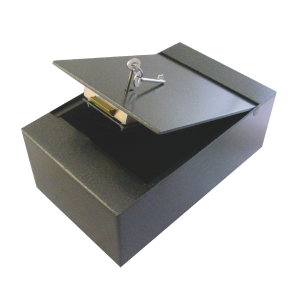How Do I Install A Safe?
The primary purpose of a safe is to provide peace of mind, but regardless of what you have stored in the safe, and regardless of whether it is being used at home or in a business environment, for complete peace of mind you need to have the safe installed properly.
Why do I need to have my safe installed properly?
A good installation of a safe means that:
- It is stored in the correct location
- It is secure and cannot be moved or uplifted by a thief or unauthorised person
- It complies with your insurance requirements
It doesn’t matter how complex or sophisticated the locking mechanism is on a safe, if the whole thing can be moved and transported out of your building then you have lost its contents. Whoever has taken it will worry about accessing the safe and its content when they have reached their own secure environment, but the bottom line for you is that you have lost the valuable belongings you were trying to protect.
So unless you have a small, mobile safe which is just for petty cash, for example, the chances are you will require your safe to be fully installed and immovable. In simple terms, the higher the risk and the higher the insurance rating of your safe, the higher the need to have it fully installed and secured.
How to install a safe
Most free-standing safes will come with pre-drilled fixing holes in the base or the rear of the safe, which means you can fix it to either a wall or a floor, or both. You will need a good quality masonry drill for this and a good quality masonry drill bit.
You need to mark a position on the floor or wall where the safe should be located, which is free of obstructions to enable you to open it, and where the safe can be secured firmly. Most safes are supplied with the requisite anchor bolts which are designed to be used on solid walls or floors, ie. to drill in to concrete or brick. A safe is required to be bolted to a solid surface so that it has a secure grip, and so that there are no gaps behind or underneath the safe. This is so that it is not possible to gain leverage to prize the safe out of its position.
Considerations when installing a safe
Avoid wooden floors – a safe should not be installed on wooden floors because standard floor boards are not thick or strong enough to carry the weight or provide a strong enough grip for the bolts or screws. It is possible to screw into floor joists using specific heavy duty wood screws, but it is not always possible to locate the safe in a suitable or practical positon to enable this. You would also need to ensure this section of floor is free of pipes or wiring underneath, that could get damaged when securing the bolts.
Avoid stud walls – for the same reason as above, stud walls should be avoided because this could cause damage to the wall, and hence the structural integrity of the building.
Check wall/floor conditions – you should check the condition of your wall and floor before drilling into it. If the concrete or plaster is damp or crumbling the bolts may not be sufficiently secured. This means that the safe can’t be installed correctly, which is a security risk and may also invalidate your insurance.
Remove skirting boards and carpet – when a safe is installed it needs to be flush to the floor and/or wall to provide no opportunity to gain leverage. This means that you may need to remove a section of skirting board or carpet. However this is quite easy to do. Simply locate the safe in its loose, unsecured position and trace around the shape of it to draw a line in the section of skirting board or carpet that needs to be removed.
Insurance requirements – your insurance company may insist on a method of installation and also that you use professional, qualified installers. So check with your insurance company that the methods you are using will validate the insurance cover. A professional installer will also demonstrate how the locking mechanism on the safe works.
Fireproof safes – fireproof safes are usually for the purpose of storing important paper documents, digital media or magnetic media. This sometimes means that the items are valuable to you personally or your business, but hold little monetary value and hence are not attractive to an opportunist thief. For this reason, sometimes fireproof safes don’t have fixing holes and can’t be secured in the same way. Standard fixing holes can also impact on the fire-resistant barrier which can affect the insurance rating of a fireproof safe. However, this is not 100% the case and you CAN get fireproof safes with fixing holes which can be secured in the same way, if for example you have paper and media which needs to be fire-protected, but also have valuable items or cash that you want to store together in the same place for convenience.
Concealed safes – it is possible to install safes in a concealed cavity in either the floor or a wall. These cavities are often already present in a home or commercial property you have inherited, but if you wish to create a concealed opening, it is recommended to contact an installation professional, as well as your insurance company to ensure this is done correctly and to validate your insurance cover.
* Please note this is a basic guide for informational purposes only, always consult a professional on such an installation.